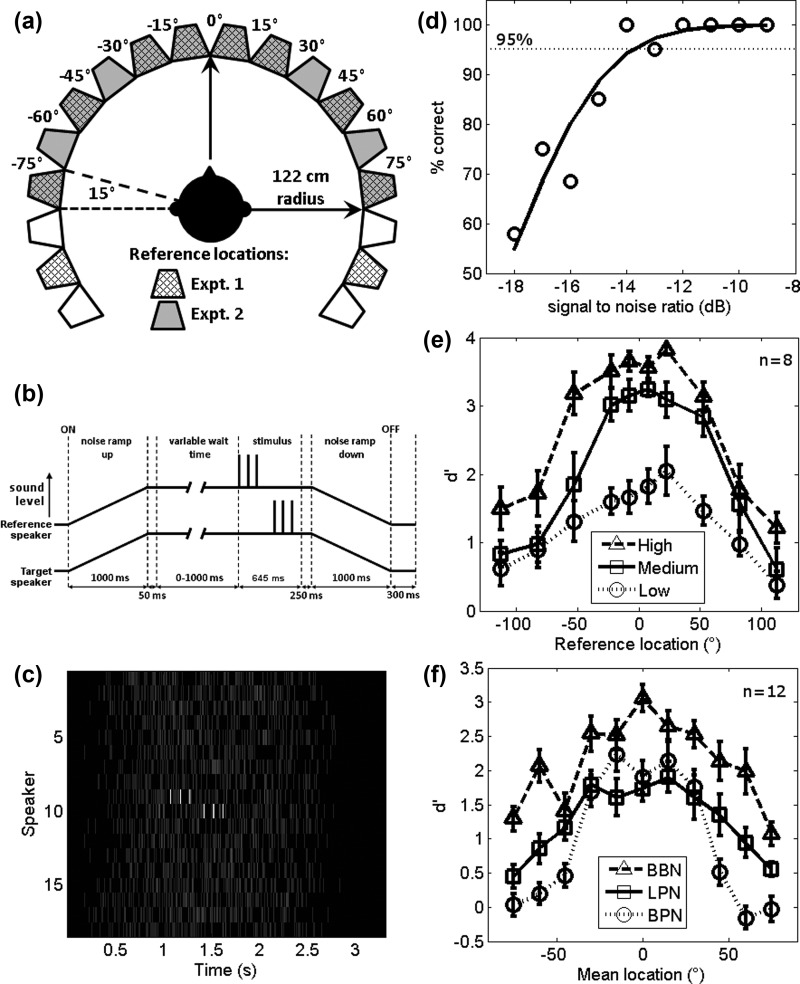FIG. 1.
Experimental setup, thresholds, and discrimination results: (a) Speaker Arrangement: The subject's head was positioned in the centre of a ring of 18 speakers, each separated by 15°. Hatched speakers were reference locations in Experiment 1, gray speakers were reference locations in Experiment 2. Mean stimulus locations for Experiment 2 are labeled. (b) Schematic of the stimulus showing the reference and target speakers. The background noise (independently generated for each speaker) is ramped up to full intensity over 1 s. The reference stimulus starts between 50 and 1050 ms after this. The reference stimulus is presented from a pseudo-randomly selected speaker from those defined in the different experiments. One hundred ms after, the target is presented from a speaker 15° to the left or the right of the reference speaker. The noisy background continues for a further 250 ms after the stimulus presentation before being ramped down to zero over 1 s. (c) Example stimulus. This diagram shows all speakers in an example stimulus. The reference stimulus comes from speaker 9 and the target speaker 10; all speakers presented independently generated noise. Lighter colours indicate a greater intensity. Reference and target stimuli have been shown at a higher SNR than was used in testing for visualisation purposes. (d) Example threshold from a single participant: The dotted black line indicates the 95% correct mark. The solid line is the binomial fit. A person's threshold was taken as the 95% correct point of the binomial fit. (e) Effect of SNR: Mean d′ of all subjects showing discriminability of the direction of the target sounds relative to the reference at three different SNRs, which were specific to each participant. Low was defined as their 95% threshold SNR, with medium and high being the threshold plus 3 and 6 dB, respectively. (f) Mean d′ of the mean stimulus location for all participants in Experiment 2 in each condition; BBN, low-pass filtered (<1 kHz, LPN) and bandpass filtered (3–5 kHz, ILD). These experiments were all performed at the subject's 95% threshold plus 1.5 dB.

